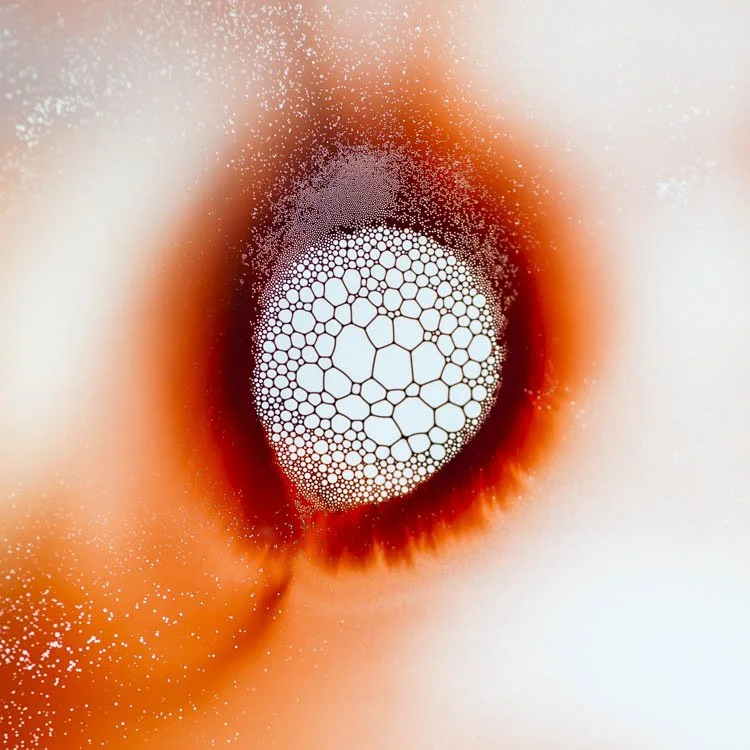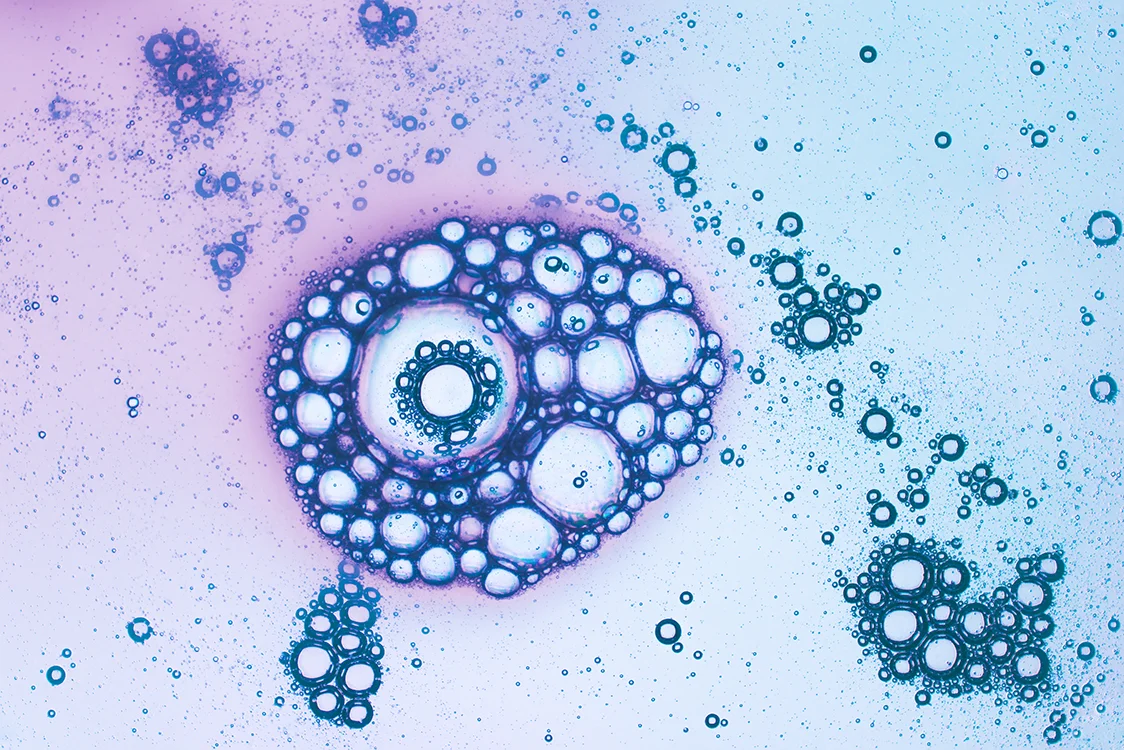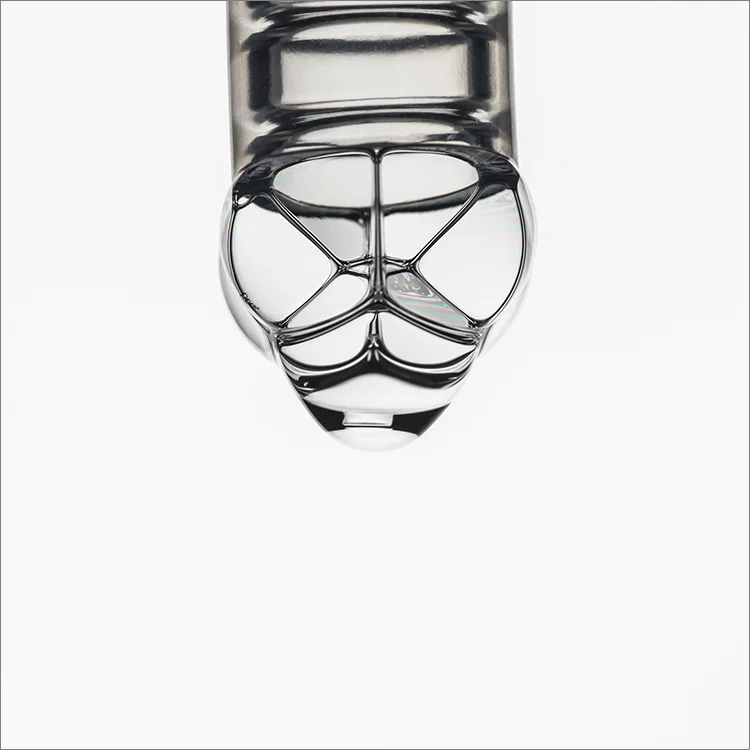In the beginning…
OK, so everyone has to start somewhere. These are some of the first bubble photographs I created and yes, they’re pretty dire. With a little perseverance and research photographing improved over time - a lot of time. So, stick with it if you’re just starting out. Working with bubbles and soap films is fascinating, if maybe a tad annoying at times. Just don’t give up, it’s well worth it in the end.






Air + Soap + Water
And… a little something special to keep the bubbles from bursting so quickly. And… some bubble research, some experimentation, some patience, (well, quite a lot actually) and the need to keep growing and developing the craft of photographing and getting a real buzz at the same time. I love my work - always and forever.
















































Bubble-Beats
Soap films moving to the rhythm of the beat - the film reacts to the sound waves as music is played. This is an ongoing series as I ask more friends and family to select a song. Providing it’s something I don’t mind listening to because the music must be played over and over again to get the pictures because the film is constantly going in and out of focus, ho-hum.








































Organising Chaos
Soap bubbles and soap films want to optimise space, using the least amount of energy. Bubbles in a heap will shuffle and shift to fill any gaps and make the best use of the area(s) they inhabit. They also want to achieve a state of equilibrium by allowing air to move from one bubble to another through the bubble walls. A Group of bubbles strive to be equal in size and shape. Initially, this may look like a random mass of froth, but over time this apparent, chaotic appearance will become quite ordered. Clever things, bubbles.
























Colour, Colour, Colour
Bubbles respond to lightwaves and create a sequence of light iridescence colours, depending on the thickness of the soap film. Thickness changes over time, as the solution drains, as do the colours. The photographs below show these by a. revealing a myriad of colours and patterning amongst different sized bubbles, randomly spaced and b. the actual time-lapse sequence of colours from equally-sized bubbles in a cylindrical, glass tube. Fascinating eh?
























Colours… to have or have not?
The light iridescence sequence comes to and end, at some point. The bubble solution drains away until there is very little left to support the bubble itself and bubble wall becomes so thin, light interference can’t take place. Black dots begin to appear and become more prevalent, this is a good indicator the bubble is about to burst.


















Coast + Islanders
No bubble is an island. I created a ‘special’ solution for these photographs, the bubbles don’t burst like normal bubbles. Instead, they slowly deflate over time to leave thin membrane skeletons. It’s great experimenting and creating bubble solutions, sometimes I have no idea what will come out of it. The point is to keep trying.
























Rude Bubbles
Every Rude Bubble is an ‘accidental’. I didn’t want or plan them, they came about from proper serious shoots. I photograph in quick succession. If you look at the photograph before and the one after the Rudie, you’ll see there’s little resemblance to what I should be taking.
It’s only when I see all the images on the big screen, I notice what’s crept in. This is usually due to a bubble(s) bursting and changing the composition because surrounding bubbles move to fill the gap.
























P.S. I want to thank my professional colleagues for coming up with each and every title, because I’m certainly no good at it. Funny how minds work eh?
Black & White
























ArtScience - A Collaboration
What you’re seeing here are photographs of equally-sized bubbles in glass tubes. The tube is vertical and held in place with a retort stand. Bubbles are blown into the tube from below.
As each new bubble enters it pushes those inside upwards, shuffling and shifting to create a ‘regular’ structure, (however, getting bubbles to do this is not an exact science - it only takes one rogue bubble to put the structure out of sync. - which happens frequently).
When the bubbles are first created they are laden with liquid and appear roundish and plump. Within seconds, the liquid drains, due to gravity, and the bubbles’ walls begin to crystallise - they become thinner and straighter.
We refer to these as Ordered Cylindrical Structures.
Amazing yes?
























Bubble Chains
These Bubble Chains reflect the same Ordered Cylindrical Structures as those seen in the glass tubes above. Again, equally-sized bubbles are created into a length of plastic piping.
Each new bubble enters the tube from below and pushes those inside upwards. Eventually, the bubbles come out of the tube and again, by shuffling, shifting and turning they spontaneously form a chain.
As with the Ordered Cylindrical Structures, this is not an exact science to get them to do this. More often than not they won’t. But, it’s well worth the time and effort when they do. It’s a wondrous sight to see.
If you want to have a look at a video on You Tube… Kym Cox, The Secret Life of Bubbles, Bubble Chain no.1
























Nestings
So, the ones that didn’t make it and sort of went their own way. I still think they’re beautiful to watch and photograph. Might be an idea for me to try and create super-long ones. I wonder how many bubbles that would take before the Nesting actually breaks away. Counting these bubbles could be a nightmare… how much time do I have?












Grace
Traditional, art symbolism associates soap bubbles with life's uncertainties. The narrative emphasises awareness of the present because the future is uncertain and unpredictable. Grace represent the opposite, the past.
The bubbles in this series did not burst. Instead, they gradually deflated to become permanent, membrane skeletons. What remains is only a trace is a trace of the bubbles’ previous existence.
This series encourages viewer to look back at the uncertain, unpredictable moments of the past. Does memory serve us correctly or are we recalling a trace of what went on before?
Grace was my Final Major Project submission for the last year BA (Hons) Photography, Arts University Bournemouth. I was awarded a First Class Honours degree and graduated in 2014.
Renowned British photographer Brian Griffin chose Grace and my Colour Confined video installation to exhibit alongside his Himmelstrasse series, a haunting typology of railway lines used to transport prisoners to concentration camps in Poland during World War II.









Exhibitions
2021. Group. Science Photographer of the Year 2021. Science & Industry Museum, Manchester, England.
2021. Group. Close-up Photographer of the Year 2021 (Cupoty). Online.
2020. Group. The Creative Exchange 2020: Portrait of a Graduate. Arts University Bournemouth, England.
2020. Group. Close-up Photographer of the Year 2020 (Cupoty). Online.
2020. Group. Science Photographer of the Year 2019. Museum of Transport & Technology, Auckland, New Zealand.
2019. Group. Science Photographer of the Year 2019. Science Museum, London, England.
2019. Group. Close-up Photographer of the Year 2019 (Cupoty). Online.
2019. Duo. Electric Eclectic. ONCA Gallery, Brighton, England.
2019. Group. Shed Photography Summer Show. Town Mill Malt House, Lyme Regis, England.
2018. Group. Shed Photography Summer Show. The Salt House, West Bay, Bridport, England.
2018. Duo. POP! Goes Reality. The Gallery Upstairs, Upton, Poole, England.
2018. Trio. Horizons. The Gallery Upstairs, Upton, Poole, England.
2017. Group. International Images for Science 2017. Cheltenham Science Festival, Town Hall, Cheltenham, England.
2017. Group. International Images for Science 2017. Royal Albert Hall, London, England.
2017. Group. International Images for Science 2017. International Science Festival, City Arts Centre, Edinburgh, England.
2017. Group. International Images for Science 2017. The Photo Show, National Exhibition Centre, Birmingham, England.
2017. Group. International Images for Science 2017. British Science Week, Banbury Museum, Banbury, England.
2017. Group. International Images for Science 2017. Times Science Festival, Town Hall, Cheltenham, England.
2016. Group. Madden’s Artists. Royal Opera Arcade Gallery, Pall Mall, London, England.
2016. Group. International Images for Science. Royal Exchange Theatre, Manchester, England.
2016. Group. Madden’s Artists. Katherine Thomas Studio, Poole, England.
2016. Group. International Images for Science 2016. Hymer’s College, Kingston upon Hull, England.
2016. Group. International Images for Science 2016. The Crystal, Royal Victoria Docks, London, England.
2016. Group. International Images for Science 2016. British Science Festival, Swansea University, Swansea, England.
2016. Group. International Images for Science 2016. Royal Academy of Engineering, London, England.
2016. Duo. Himmelstrasse (Brian Griffin), Grace/Colour Confined (Kym Cox). The Magic Gallery, London, England.
2016. Solo. Bubbles: Ordered Cylindrical Structures & Bubble Chains. Fitzgerald Library, Trinity College Dublin, Ireland.
2016. Solo. Bubbles: Ordered Cylindrical Structures & Bubble Chains. Hamilton Building, Trinity College Dublin, Ireland.
2016. Group. International Images for Science 2015. Derry Millenium Centre, Londonderry, Northern Ireland.
2016. Group. International Images for Science 2015. Media City UK, Salford University, Salford, England.
2016. Group. International Images for Science 2015. Dye House Gallery, Bradford College, Bradford, England.
2015. Duo. Kym & Juliet. Poole Town & Country Fair, Upton Country Park, Poole, Dorset.
2015. Group. Turf: Graduate Show (BA Hons Photography). The Barge House, Oxo Tower Wharfe, London, England.
2014. Group. Association of Photographers Student Awards 2014. London, England.
2011. Group. Stop the Bus (Arts University Bournemouth Students). The Triangle, Bournemouth, England.













